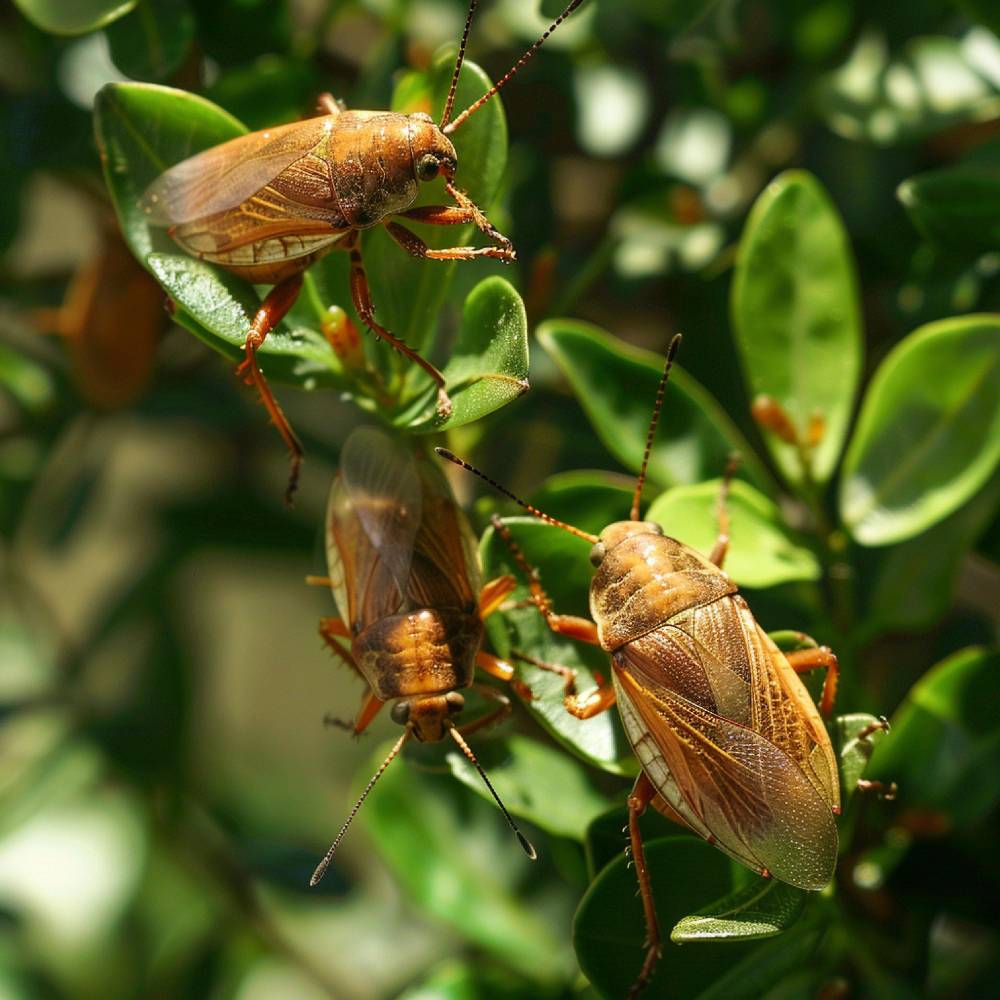
Trees are susceptible to various pests and diseases that can threaten their health and vitality. It's essential to distinguish between harmful tree pests and beneficial insects. Here at Jay's Trees and Gutters, we are committed to offering high-quality tree services, including tree trimming, emergency tree services, and many more. We’ve been in the tree care industry for over 10 years, so we understand what kind of pests can threaten the health and vitality of your trees and the beneficial insects that can help keep your trees healthy.
In this article, Jay's Trees and Gutters helps you understand the difference between tree pests and beneficial insects that play a crucial role in maintaining the health and vitality of trees. Our arborists will shed light on the beneficial predators to welcome in your garden and those to avoid.
These tiny, sap-sucking insects can cause leaves to curl and become yellow. To get rid of aphids, spray the affected plants with insecticidal soap and make sure to cover the undersides of the leaves where aphids often hide.
Scale insects feed on tree sap, causing stunted growth and branch dieback. You can control them using horticultural oil or insecticidal soap. Strategic tree pruning can help remove heavily infested branches and promote new, healthy growth.
Many caterpillars are voracious eaters that can defoliate trees, especially during their larval stages. Neem oil is a natural insecticide that can be effective against caterpillars. If you need help with controlling caterpillars, get in touch with a trusted arborist.
These wood-boring insects can damage the interior of trees and lead to structural weakness and decay. The best way to prevent borer infestations is to keep trees healthy and avoid stress factors like drought or injury. If the infestation is severe, consult a tree care company for treatment.
Spider mites are tiny arachnids that can infest trees, causing yellowing leaves and webbing. A good way to control mites is to increase humidity around the tree by spraying the leaves with water. Alternatively, you can use insecticidal soap or a specialized miticide as needed.
Ladybugs are voracious predators of aphids, a common garden pest. They can quickly reduce aphid populations, thereby protecting your plants from damage. You can attract them by planting flowers that attract ladybugs, such as dill, fennel, and marigolds.
Lacewings are beneficial insects that prey on a variety of pests, including aphids, caterpillars, and mealybugs. They are particularly effective at controlling pests during the larval stage. Nectar-rich flowers are known to attract adult lacewings.
Characterized by their triangular head and large forelimbs, praying mantises are skilled hunters that prey on a wide range of insects, including moths, butterflies, grasshoppers, and crickets. These insects are attracted by tall grasses, shrubs, and other hiding places.
If you have flowers in your yard or garden, you’ve probably seen bees buzzing around them. Bees are essential pollinators for fruits and vegetables. They help to ensure a healthy garden and a bountiful harvest. If you want to attract more bees, plant flowers such as sunflowers, lavender, and rosemary.
If you’re looking for a trusted tree service provider, reach out to Jay's Trees and Gutters. We are a local tree company that you can count on for all of your needs, including tree removal and pruning.